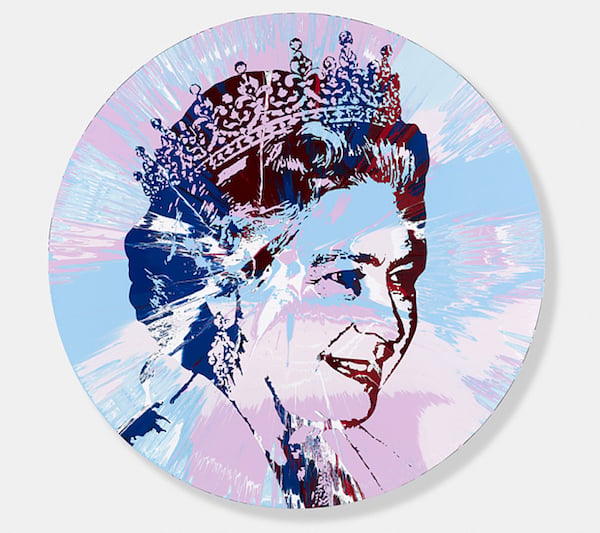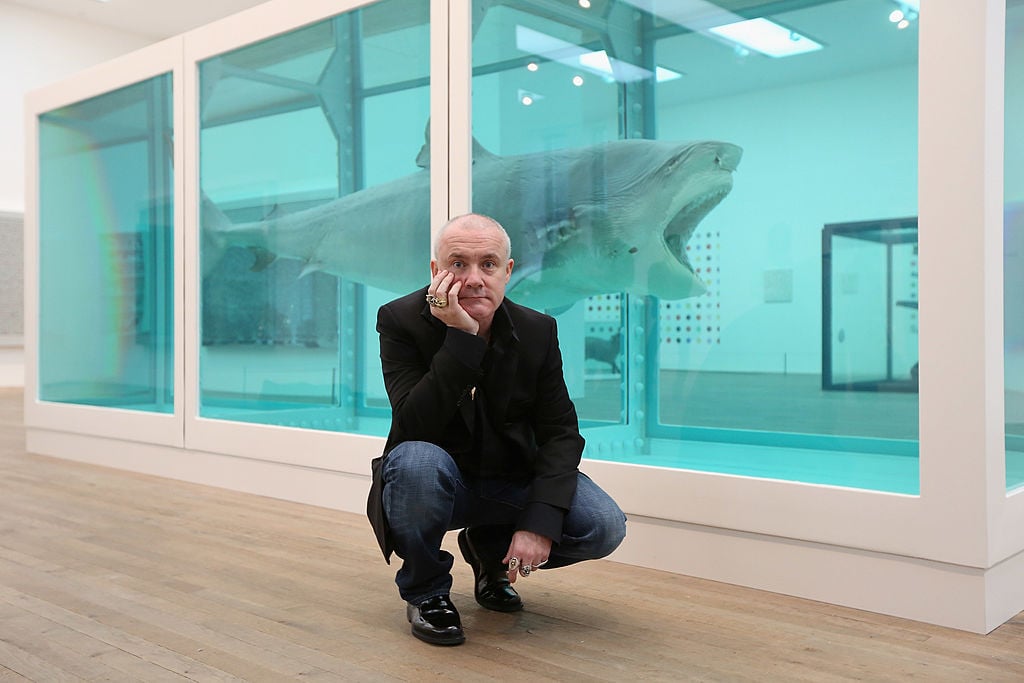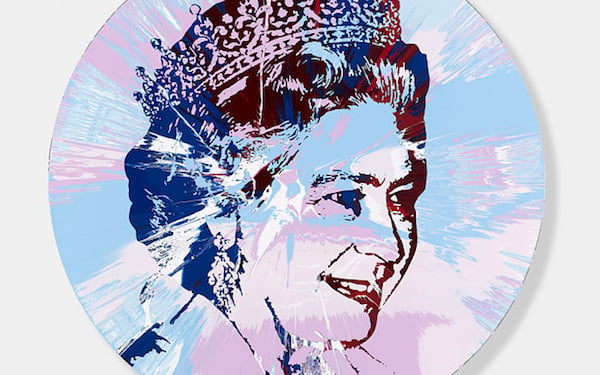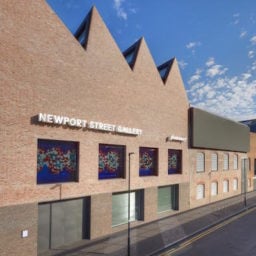
Damien Hirst’s portrait of Queen Elizabeth II (2014).
Photo: Prudence Cuming Associates © Damien Hirst and Science Ltd. All rights reserved, DACS 2016.
Damien Hirst—he of the dead sharks and drug cabinets—might not strike you as the obvious choice for a Royal portraitist at first, but the YBA has indeed painted the portrait of Queen Elizabeth, and gifted it to the government.
The 2014 artwork, shown in the media for the first time last Friday by the Telegraph, was made in Hirst’s signature spin technique. Crucially, because it went from the artist’s studio straight to the Government Art Collection (GAC) last year, it has never been seen in public.
No image of the painting was ever uploaded to the artist’s website either, so records of the portrait’s existence have only been found in the GAC’s annual report, which lists the art acquisitions that the ministers make each year on behalf of the nation.

Damien Hirst in front of his artwork The Physical Impossibility of Death in the Mind of Someone Living at London’s Tate Modern in 2012.
Photo: Oli Scarff/Getty Images.
According to this report, Hirst donated the portrait to the collection on March 23, 2015, after officials approached his studio looking to purchase a second work by Hirst for the GAC. The collection already contains one of Hirst’s dot paintings.
Initially, after realizing they could not really afford the price tag of any of Hirst’s works with their public funding budget, the officials gave up their hopes of purchasing another piece. It was then that Hirst, who according to the Telegraph is a supporter of the GAC scheme, decided to donate the painting.
The GAC, which began in 1898, comprises over 13,500 artworks dating from the 16th century to the present, by (mostly) British artists. The works are displayed in UK Government buildings in nearly every capital city, making it “the most dispersed collection of British art in the world,” according to its website. Its mission is “to promote British art while contributing to cultural diplomacy.”
Many have seen Hirst’s portrait of the Queen—and his donating it—as the ultimate testimony of his absorption by the establishment, leaving his rebellious antics as a young artist in the late 1980s and 1990s far behind, not to mention his personal and professional excesses of the 2000s.

Newport Street Gallery in London
Photo: Prudence Cuming © Kioyar Ltd.
Following his $160 million Sotheby’s extravaganza in 2008 and the subsequent critical slump, and since his recent 50th birthday, Hirst has embraced a more measured public persona of late, complete with a sleek private museum called Newport Street Gallery, erected to host and exhibit the curated highlights of his Murderme art collection.
“My first reaction was total surprise to find Damien Hirst, who back in the 1990s was the enfant terrible of British art, has made a portrait of the Queen,” art critic and broadcaster Alastair Sooke told the Telegraph. “The broader context of Hirst and his career is that in the eyes of many critics and people within contemporary art he has fallen from grace,” he added.
Follow Artnet News on Facebook:
Want to stay ahead of the art world? Subscribe to our newsletter to get the breaking news, eye-opening interviews, and incisive critical takes that drive the conversation forward.











